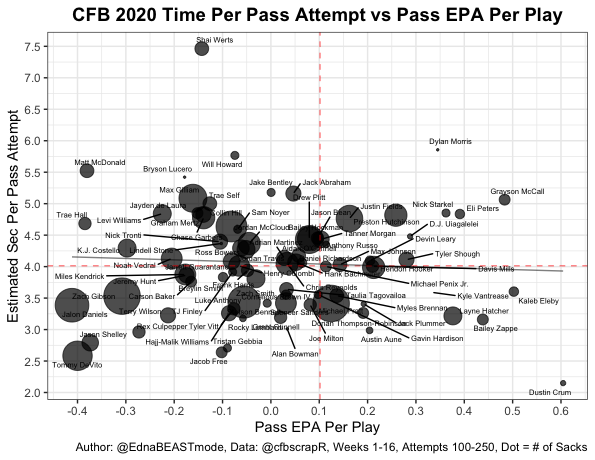There is a stigma in the NFL that teams need to protect the football and play good defense. The results are quarterbacks making quick/short throws, and subsequently being “rewarded” in terms of high completion percentage.
Let’s get it out of the way now: We do not want any part of these low-upside fantasy options at quarterback.
Looking at the chart below, we can identify that there is a linear relationship between “Time to Throw” and completion percentage:
The negative sloping line is showing that a quicker Time to Throw results in a higher completion percentage. The examples in the bottom right quadrant are Teddy Bridgewater (t-QB25), Drew Brees (QB19), Phillip Rivers (t-QB25), and Ryan Fitzpatrick (QB17) — rankings in parenthesis are fantasy points per game at the quarterback position.
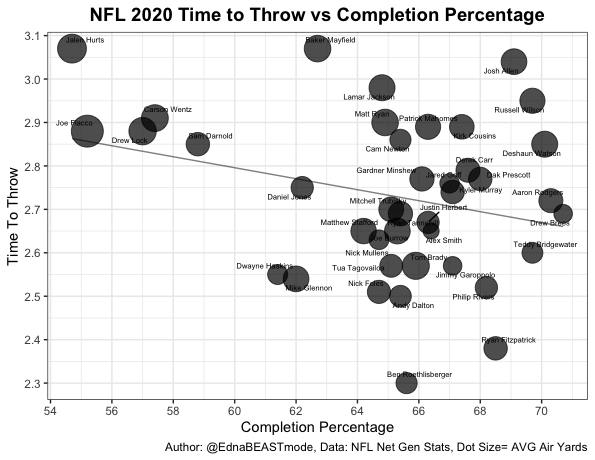
Next, we look at the relationship between Time to Throw and Expected Points Added (EPA) per play.
For anyone who is new to EPA, ESPN (yes, that ESPN) wrote an article explaining the metric here. In summary, EPA calculates the expected points (based on historical data) that are scored from a particular down and distance to goal. The expected points from the down and distance at the result of the play are then subtracted from the expected points at the beginning of the play to determine how that play has added to the probability of scoring points. High EPA players are driving the ball down the football field, converting touchdowns when expected, and avoiding negative plays (sacks, interceptions, and negative yards).
The relationship between Time to Throw and EPA per play is positive sloping, which means quarterbacks who are holding the ball longer are increasing their teams probability of scoring points. There is an elite group in the upper-right quadrant that contains Patrick Mahomes, Lamar Jackson, Josh Allen, Russell Wilson, and Deshaun Watson, players who are adding points by extending the drive.
These quarterbacks finished QB3, QB10, QB4, QB8, and QB7 in average fantasy points per game. Quarterbacks who are able to extend the play and increase the probability of their team scoring points create upside for us in fantasy. We like those types of players, as we like fantasy points.
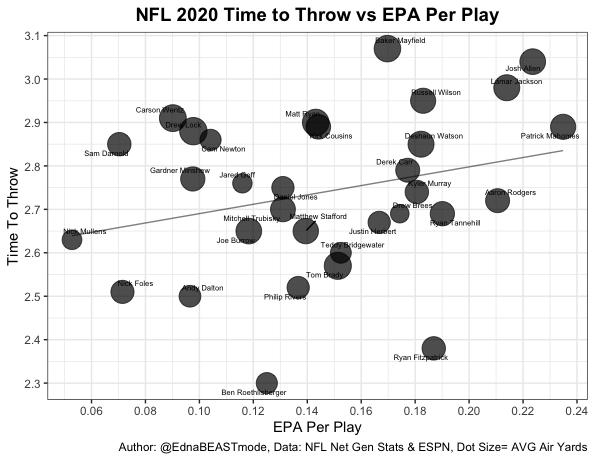
Moving on, we are going to apply this concept to college football data, in order to try and identify these traits in college football players for both upcoming dynasty and devy drafts. The graph below is a sample size of players with a minimum of 250 pass attempts. The players who are performing well that are highly-discussed are Mac Jones (2021), Kyle Trask (2021), Zach Wilson (2021), Sam Howell (2022), Spencer Rattler (2022), Justin Fields (2021), and Trevor Lawrence (2021).
Let’s ignore these players, and try to dive deeper.
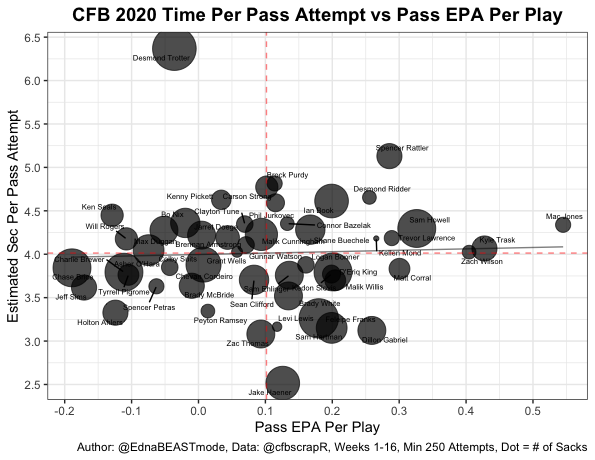
We arrive here: Let’s focus on Kellen Mond (2021) and Desmond Ridder (2021), who are both in the upper-right quadrant.
Mond ran a 4.81 40 yard dash out of high school, which was above average for his grouping and confirms that he can evade the pocket. Additionally, Mond was also only sacked 7 times in 2020. Ridder was also right behind Mond in EPA per play. Ridder ran a 4.83 40 yard dash out of high school, which was also above average. Both guys should be late-round picks in upcoming dynasty drafts (Editor’s note: Ridder has since announced his return to school).
Matt Corral is a third name to monitor for devy drafts, a player who ran a 4.80 40 yard dash coming out of high school. Corral’s position on this graph mirrors Aaron Rodgers’ in the NFL version above. He is getting the ball of quicker than his peers, but is still returning a high EPA per play.
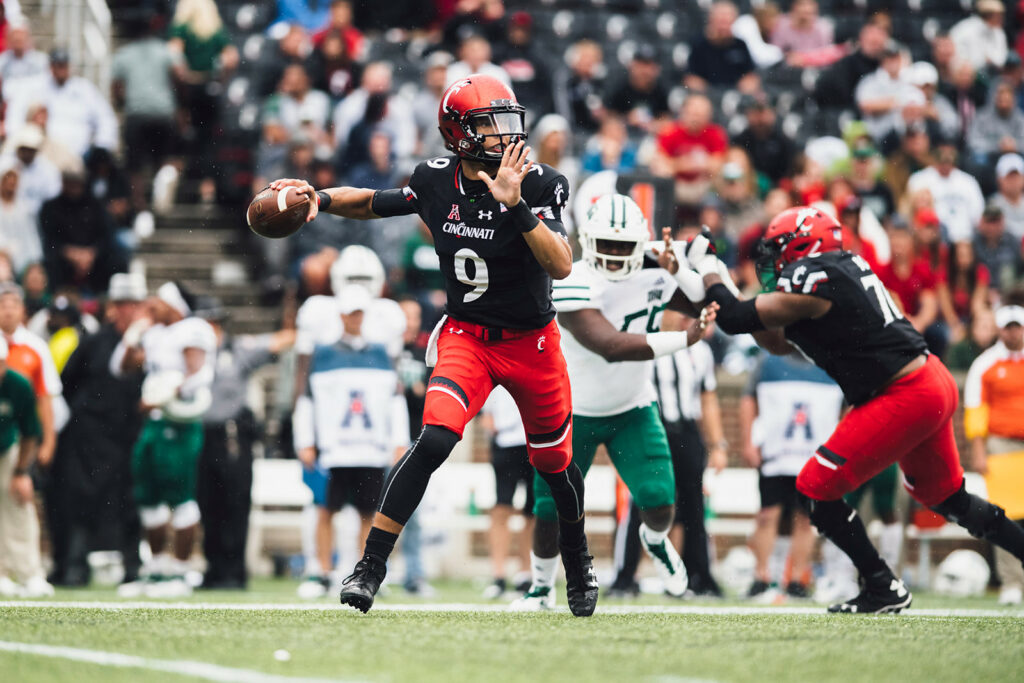
Finally, we will take a look at players with between 100-250 pass attempts in the graph below. A group of underclassmen who have separated themselves are Grayson McCall (4.60 40 yard dash), Dylan Morris (5.22 40 yard dash), D.J. Uiagalelei (5.15 40 yard dash), and Tyler Shough (4.88 40 yard dash).
Either (or both, depending on league formatting, ex. super-flex) Uiagalelei and McCall would be my priority in ’21 devy targets if they are not already rostered.
